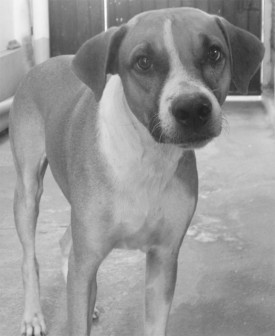Continued
The stud dog
Last week, we dealt with the brood bitch. Of course, the other main actor in the breeding drama is the male dog. This animal is also referred to as the stud dog.
The male partner must be sought out with some serious objectives in mind. You must know whether he has an affable temperament or whether he is a fierce, vicious dog that might not only be rough with the female he is to be mated with, but also might pass on the vicious streak to the offspring he has sired. Also, you don’t want a mangy, diseased cur mating with your bitch. His size might be important, in that you don’t want his heavy weight injuring your delicate female.
The important thing is to understand that it is imperative to choose the stud dog well in advance of the actual mating. If a stud dog has made a career of provably producing strong and vibrant puppies, especially if his mating prowess was over a long period and with several bitches, then it stands to reason that he will sire a successful litter with your female dog too.
Some breeders here in Guyana offer a stud service. If you have an outstanding bitch from the bloodline, you may give serious thought to using a stud from that same strain to reinforce the best qualities in your bitch; and remember what I said about Inbreeding and Line Breeding the week before the last. .


A stud should be kept in top physical condition with regular exercise, routine health check-ups and a sound diet. Excessive weight is a severe handicap to a stud dog. He could be too heavy to mount a bitch, or his excessive heavy weight could injure the bitch’s hip or back bone. On the other hand, a poorly kept or run-down, emaciated dog is unsatisfactory.
Stud dogs of larger breeds should be x-rayed for hip dysplasia. Dogs with hip dysplasia should not be offered at stud.
Breeder males must not have skin lesions reminiscent of a mange infection; nor should he have ticks, fleas, lice, ear mites, etc. It is preferable that his vaccination status be current.
Before your dog is used at stud for the first time, check to be sure he has no problems that could interfere with successful mating. Some male dogs have a long flexible forepart to the penis. If it bends backward it could make intromission impossible. (If this is the case, then he should not be used as a stud dog.)
Red, pimple-like bumps or growths on the penis should receive veterinary attention. Laceration and erosions tend to bleed when the dog has an erection. During intercourse, blood – if mixed with semen – reduces the motility of the sperm, and the possibility of conception.
Other abnormalities are stricture of the foreskin; an infection beneath the sheath; abnormal or undescended testicles; and a discharge from the urethra. More about these conditions, when we discuss diseases of the male genital tract. If one of these is present, the dog should be examined and treated by a veterinarian before mating. In fact, there should be great discussion as to whether this dog (stud) should be used at all.
Please implement disease preventative measures (vaccinations, routine dewormings, monthly anti-heartworm medication, etc) and adopt-a-pet from the GSPCA’s Animal Clinic and Shelter at Robb Street and Orange Walk, if you have the wherewithal to care well for the animals. Do not stray your unwanted pets, take them to the GSPCA’s Clinic and Shelter instead. If you do not wish your pet to have puppies or kittens, you may exploit the GSPCA’s free spay and neutering programme. If you see anyone being cruel to an animal, or if you need any technical information, please get in touch with the Clinic and Shelter by calling 226-4237.
Please implement disease preventative measures (vaccinations, routine dewormings, monthly anti-heartworm medication, etc) and adopt-a-pet from the GSPCA’s Animal Clinic and Shelter at Robb Street and Orange Walk, if you have the wherewithal to care well for the animals. Do not stray your unwanted pets, take them to the GSPCA’s Clinic and Shelter instead. If you do not wish your pet to have puppies or kittens, you may exploit the GSPCA’s free spay and neutering programme. If you see anyone being cruel to an animal, or if you need any technical information, please get in touch with the Clinic and Shelter by calling 226-4237.




